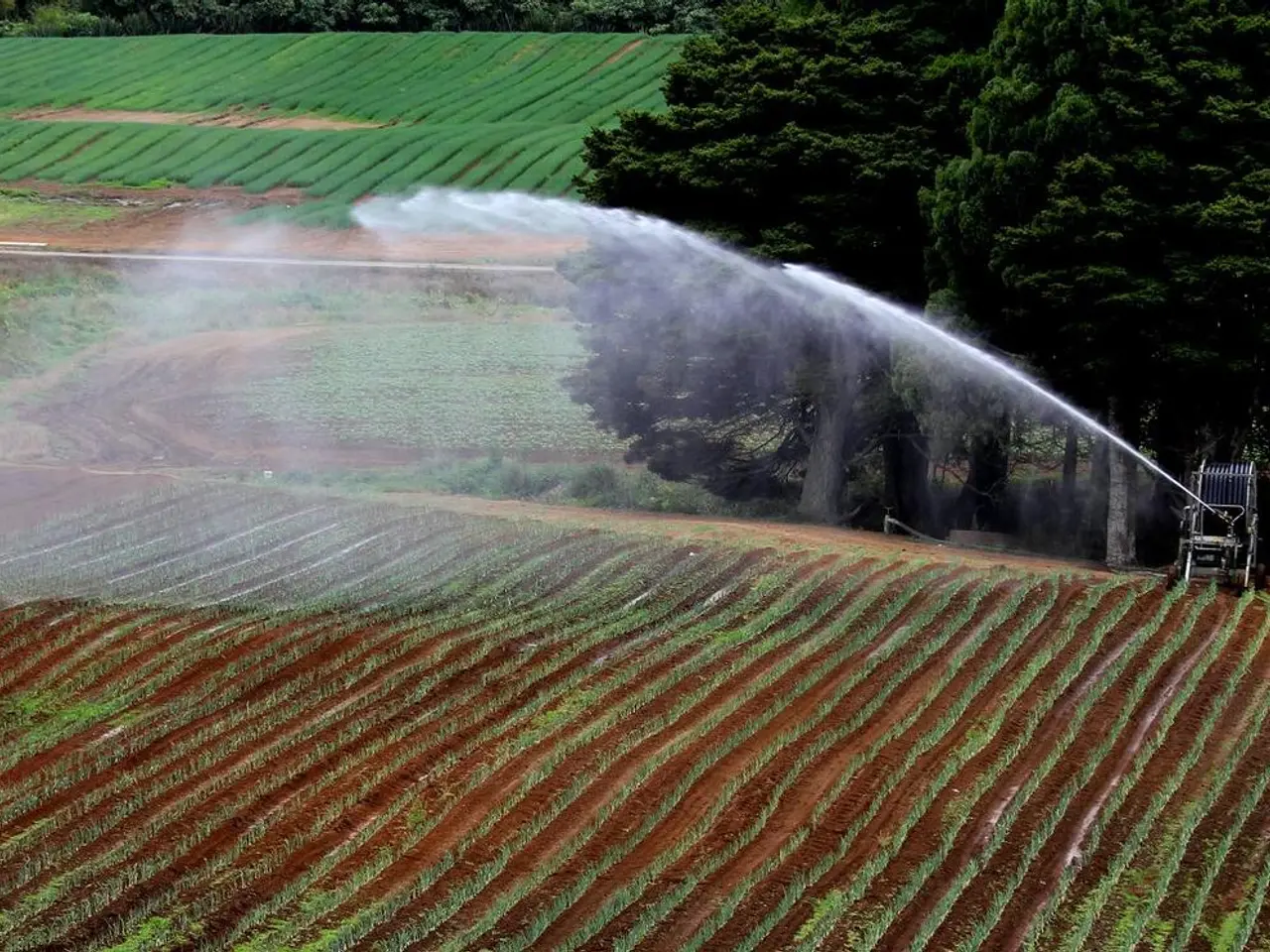Cultivate 6 Time-Honored Crops for Enhanced Health and Sustainability Today
In the realm of sustainable home gardening, ancient crops like Amaranth, Moringa, Bambara groundnut, Fonio, Cowpea, and Taro are gaining popularity. These resilient plants, native to various parts of the world, offer numerous benefits and are well-suited for diverse soil types and climates.
Amaranth
A warm-season annual grain and leafy vegetable, Amaranth thrives in USDA zones 3–11. It prefers full sun and well-drained soils, and is drought tolerant once established. Amaranth is quick-growing and suited for short growing seasons in cooler zones or longer seasons in warmer zones. Every part of the amaranth plant is edible, and its seeds are rich in protein and packed with vitamins and minerals.
Moringa
Originating from tropical regions, Moringa is hardy in USDA zones 9–11 due to its frost sensitivity. It requires full sun and well-drained soil. In cooler zones, Moringa can be grown in containers and brought indoors during winter or started fresh each season. The leaves of the Moringa tree are very high in protein, making it a nutritious addition to any garden.
Bambara Groundnut (Vigna subterranea)
A legume similar to cowpea, originally from Africa, Bambara groundnut grows best in warm climates, suitable for USDA zones 9–11. It is drought resistant and improves soil fertility through nitrogen fixation. Bambara groundnuts can be eaten fresh or dried and boiled, similar to peanuts.
Fonio
Fonio, an ancient African grain, favors USDA zones 8–11. It has a very short growing season (about 70 days) and tolerates drought and poor soil. Fonio cooks quickly into a porridge-like consistency and is high in protein, gluten-free, and rich in micronutrients.
Cowpea
Cowpea, another warm-season legume, is highly drought tolerant and good for improving soil nitrogen. It grows in USDA zones 6–11, best planted after the last frost in well-drained soil and full sun. Cowpeas are versatile for food and cover cropping.
Taro
A tropical root crop, Taro is hardy in USDA zones 8–11. It requires a warm, humid climate and moist or swampy soil conditions to thrive. Taro can be grown in containers in cooler zones but will not survive frost outdoors.
Growing Tips Summary by Zone:
| Crop | USDA Hardiness Zone | Key Growing Tips | |-----------------|---------------------|---------------------------------------------------------------| | Amaranth | 3–11 | Plant after frost; full sun; drought tolerant; fast maturing | | Moringa | 9–11 | Frost sensitive; needs full sun; container culture in cold zones | | Bambara groundnut | 9–11 | Warm climate; frost free; drought resistant; nitrogen fixer | | Fonio | 8–11 | Heat loving; short season; poor soil tolerant; sandy soils ok | | Cowpea | 6–11 | Warm soil; full sun; drought tolerant; nitrogen fixer | | Taro | 8–11 | Moist, warm, shady; needs swampy or consistently moist soil |
For gardeners in cooler zones (3–7), growing some of these crops like Amaranth and Cowpea during warm months is possible, while others (Moringa, Taro) may benefit from container or greenhouse cultivation.
For further gardening zone information and regional climate adaptation, USDA zone maps and regional guides can help plan planting and harvest timing based on your local zone and seasonal conditions. Ancient crops often have added benefits such as soil improvement (legumes) and adaptability to less fertile soils, making them excellent for sustainable home gardening.
If you require specific zone-by-zone cultivation guides or more detailed care instructions, feel free to ask!
[1] "Amaranth." Missouri Botanical Garden, https://www.missouribotanicalgarden.org/Plants/PlantFinder/PlantFinderDetails.aspx?kempercode=a056 [2] "Moringa." The Spruce, https://www.thespruce.com/growing-moringa-trees-1402902 [3] "Bambara Groundnut." World Agroforestry Centre, https://www.worldagroforestry.org/articles/node/3043 [4] "Fonio." The Spruce, https://www.thespruce.com/growing-fonio-grain-1416867 [5] "Cowpea." The Spruce, https://www.thespruce.com/growing-cowpeas-1416869 [6] "Taro." The Spruce, https://www.thespruce.com/growing-taro-1416871
- The practice of growing ancient crops like Amaranth and Cowpea in cooler zones (3–7) during warm months can contribute to a sustainable home gardening lifestyle, providing both edible food and soil improvement.
- Ancient grains such as Fonio, native to warmer USDA zones (8–11), are quick-growing and thrive in poor soil conditions, making them ideal for growing in small home gardens and embracing healthy-cooking practices.
- Global cuisines can be enriched by the cultivation of food-and-drink crops like Moringa, Bambara groundnut, and Taro, which are well-suited for diverse soil types and climates, promoting a global-cuisines lifestyle in home gardening.
- Home-and-garden enthusiasts can adopt sustainable living practices by growing hardy, nutritious plants in their gardens, such as Amaranth, Moringa, Bambara groundnut, Fonio, Cowpea, and Taro, which offer numerous benefits and are suitable for various climates and soil conditions.




